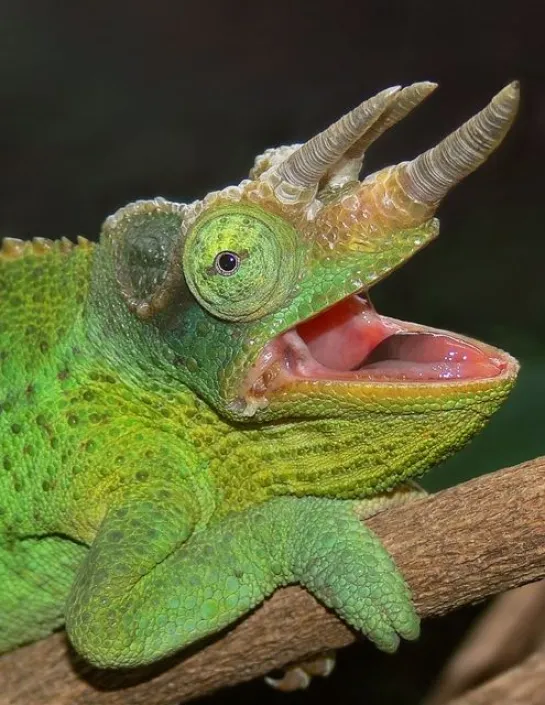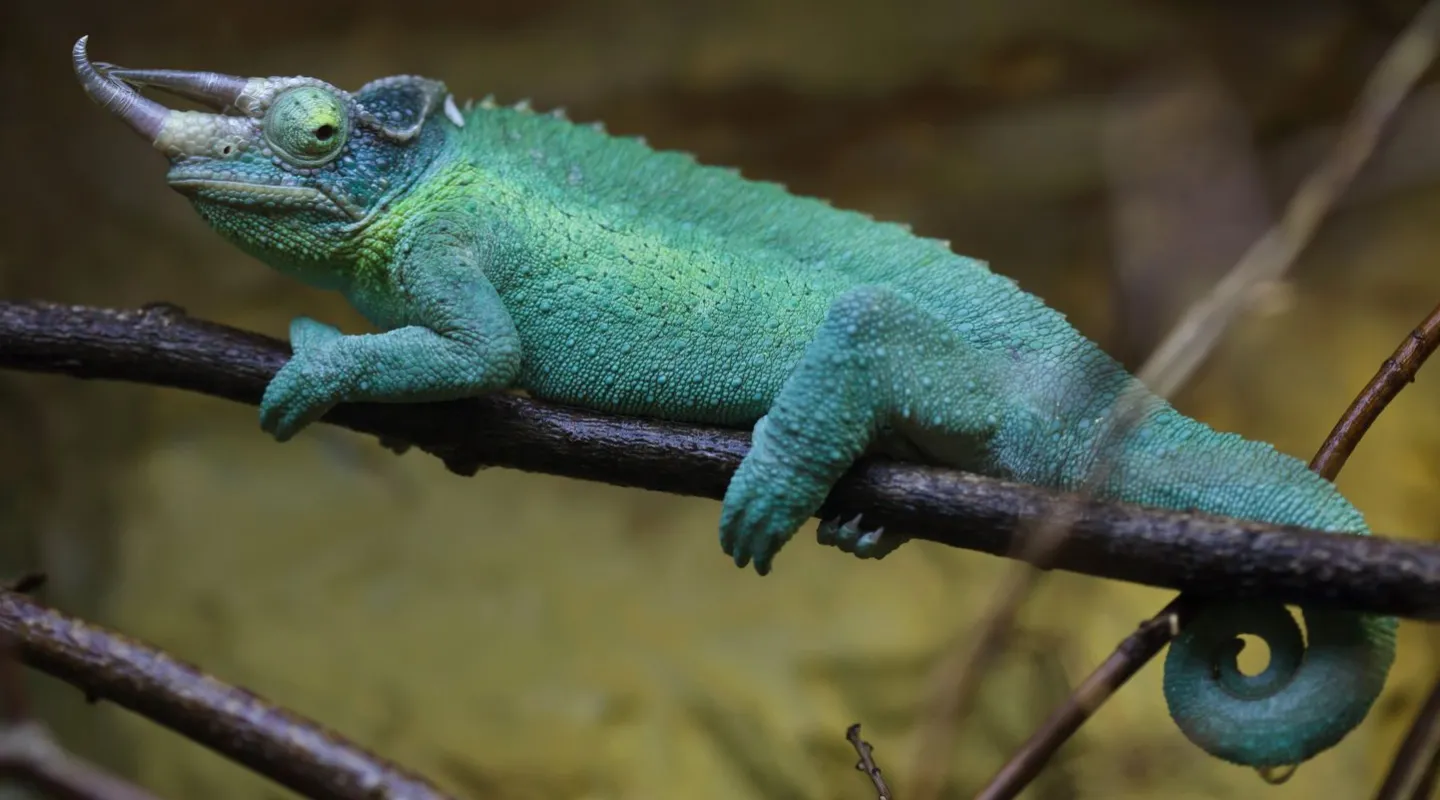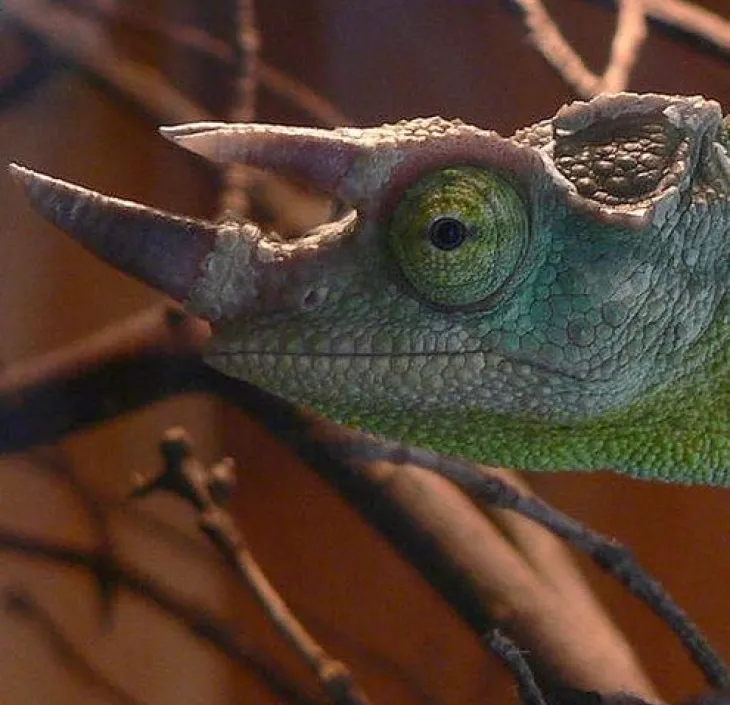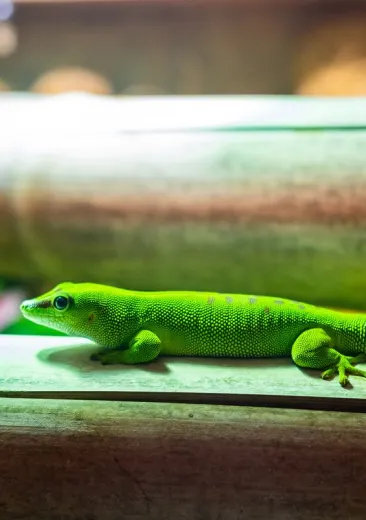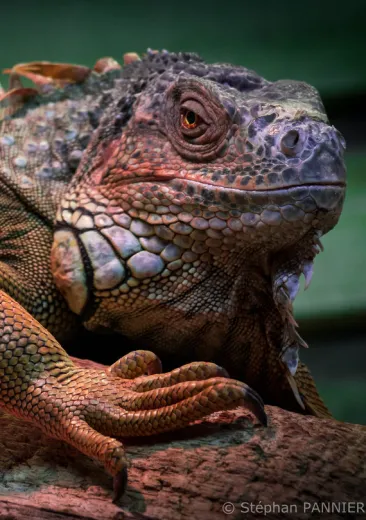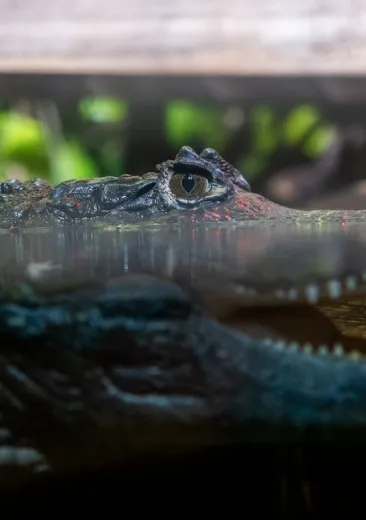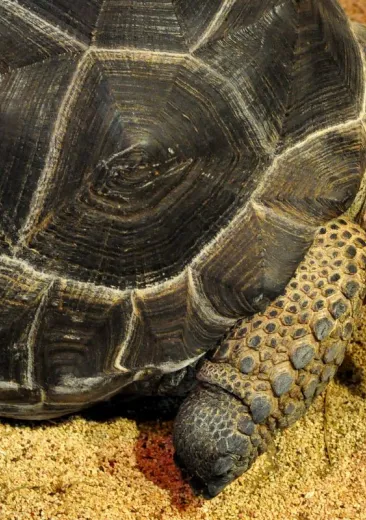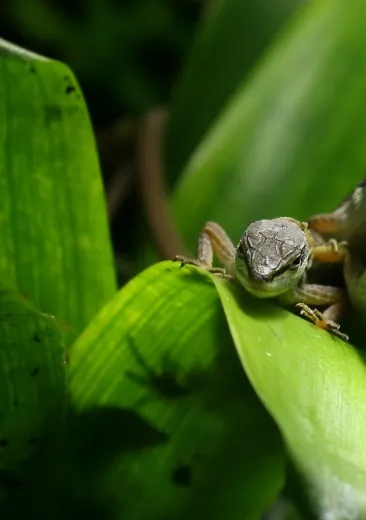The female can give birth to between 5 and 50 offspring. The male is territorial and can be very aggressive towards its rivals.
The Jackson's chameleon feeds on insects such as locusts, which it captures with its tongue.
Where is the animal to be found?
The Jackson's chameleon lives in high altitude forests where the living conditions are cool and humid. It is found in the mountains, between 1500 and 2500 m. This chameleon only moves on the ground to give birth...or to change trees!
How can it be recognised?
- This mountain and tree chameleon, also known as the three-horned chameleon, owes its name to the protrusions on its forehead.
- There are three subspecies in which the female has only one horn or no horn at all.
- It also has a sort of cephalic helmet and a crest on its back. Its eyes can move in all directions and independently of each other, allowing it to see around 360°.
- Males measure between 30 and 40 cm including the tail, whereas females are generally smaller.
What is distinctive about it?
Introduced by humans as pets on the island of Hawaii, Jackson's chameleons - Trioceros jacksonii - escaped and this species is now considered undesirable and invasive because it eats endemic insects and spiders in large numbers, thereby threatening biodiversity.
Threat and protective measure
This species is protected by the Washington Convention.
